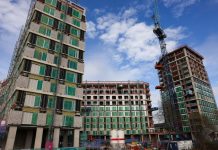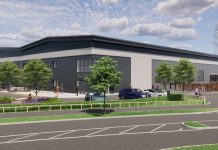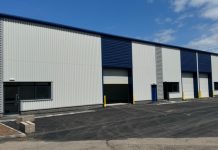During World Green Building Week (22 – 27 September), global real estate advisors, JLL, offers advice on some innovative steps to make offices and industrial buildings more sustainable.
Graham Taylor, building consultancy director at JLL in Birmingham admits major projects to install energy-efficient or sustainable measures can be challenging for some businesses, but even taking one or two steps can make a huge impact in terms of cost and green credentials.
“Being green is finally being seen as making smart business sense and increasingly a property’s sustainability credentials are making an impact on its value,” adds Graham.
“Sustainability is key for us at JLL, whether we’re marketing properties, managing facilities or working with developers on new buildings – ensuring it’s as environmentally soundas possible, is at the heart of what we do. And it’s also a rapidly developing world. That’s why we’re sharing some tips and ideas that cover everything from some simple, affordable options to the latest technologies that combine sustainability with style.”
Graham Taylor’s top sustainability tips are as follows:
Lighting
Supplement conventional lighting with light tubes, or ‘sun pipes’ to make the most of sunlight during daylight hours. A system originally developed by the ancient Egyptians these devices reply on reflective materials to literally pipe natural light into buildings.
Luminous Textile Panels – new lighting system that integrates multi-coloured LEDs within acoustic textile panels. They can change colour and with a software solution, you can upload dynamic content in to these textiles. These bring spaces alive.
Rainwater harvesting
Install rain water catchment devices. Use collected water for flushing toilets, watering green roof. If water is captured at the roof level, a small hydroelectric system could generate power as the water drops to ground level, delivering greater energy efficiency as well
Controls
The ability to control your space via an application on your mobile device and across all platforms is now a reality. The days of the old thermostat on the wall are numbered, with the arrival of intelligent software and devices, such as Nest, that adjust controls according to actual and real-time building use.
Composting
Having a compost collection in kitchen for food scraps, compostable plates and cutlery is a simple step to cutting waste and can also be used energy generation.
Transport
Provide charging points for electric vehicles and prioritise or incentivise car sharing schemes for employees. Have a pool of hybrid or electric vehicles for business related journeys.
Planting – indoor and out
Plant pollution-controlling trees directly outside the building, and include planting inside the building to improve indoor air quality and the general working environment. ‘Living Walls’ are a popular way of improving the atmosphere – in both senses. Install roof gardens and communal vegetable gardens for staff to grow food.
Eco-friendly furniture
Office furniture without toxic elements. Widely use of cotton and wood.
Paints, carpets and finishes that have lower VOC and other toxicity compositions
Community energy
Work with the local community to enhance the sustainability of your buildings. Consider solar panels installed on behalf of community energy groups
For the ultimate in people power, take a look at generating electricity from footsteps See www.pavegen.com
Energy & Waste:
Consider biofuels. Boilers fuelled by waste vegetable oil collected and refined from local restaurants and cafes are becoming increasingly common.





















